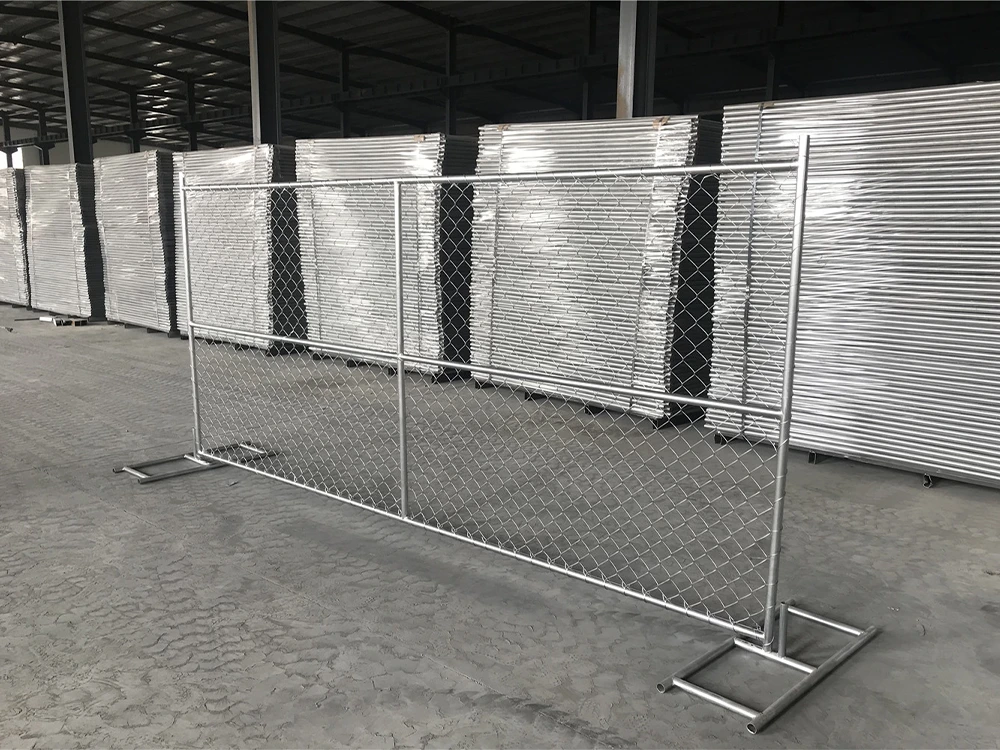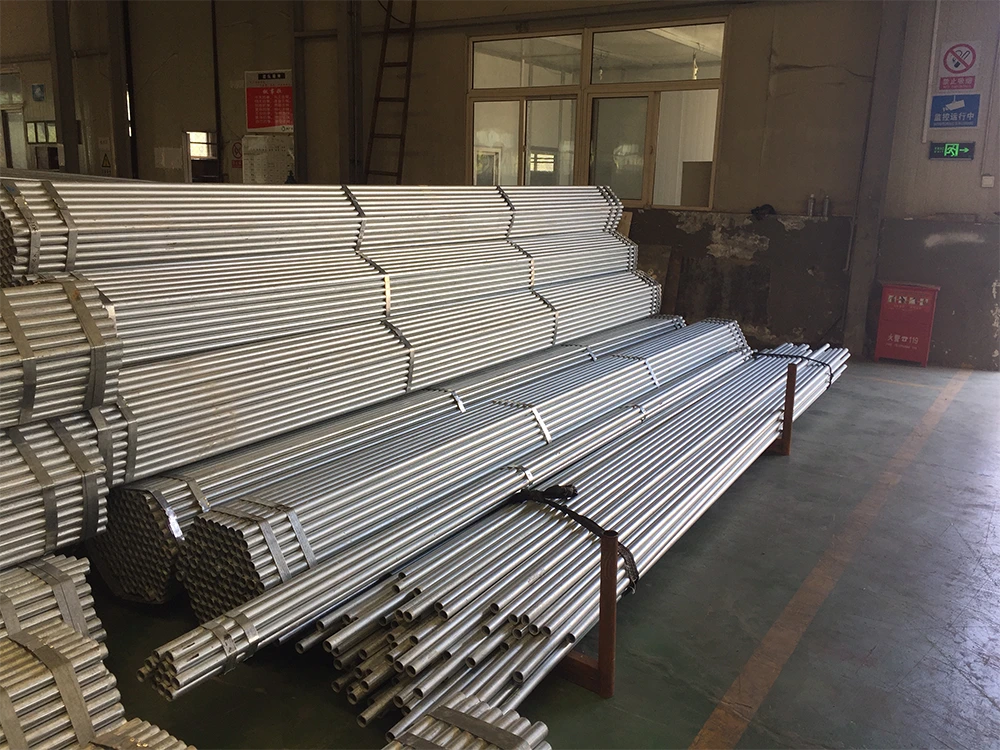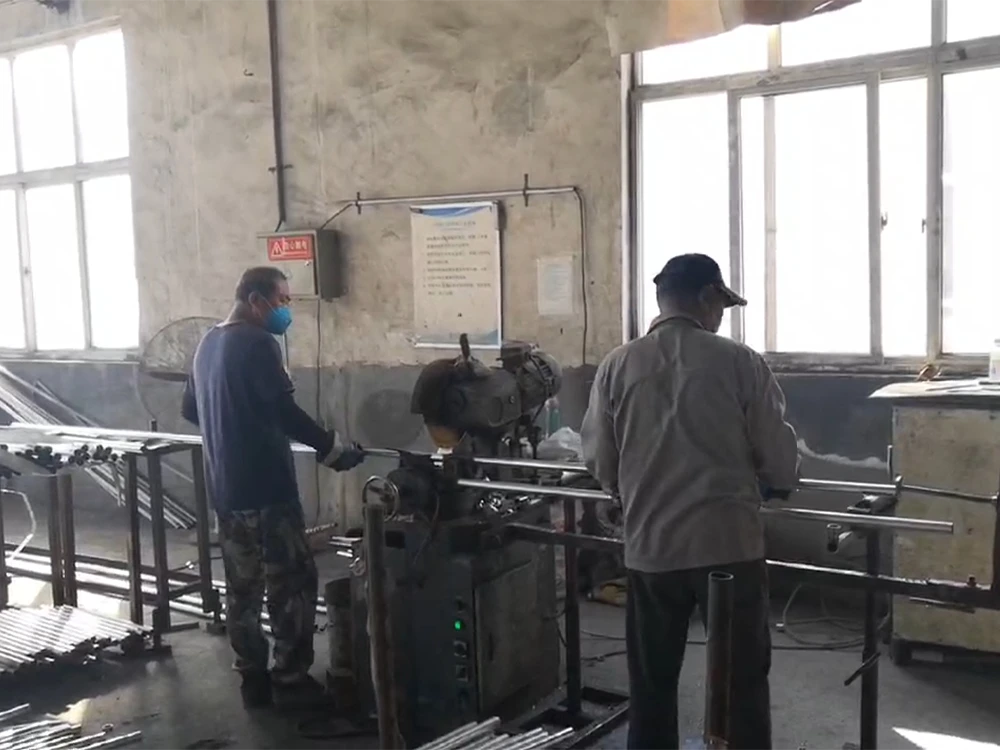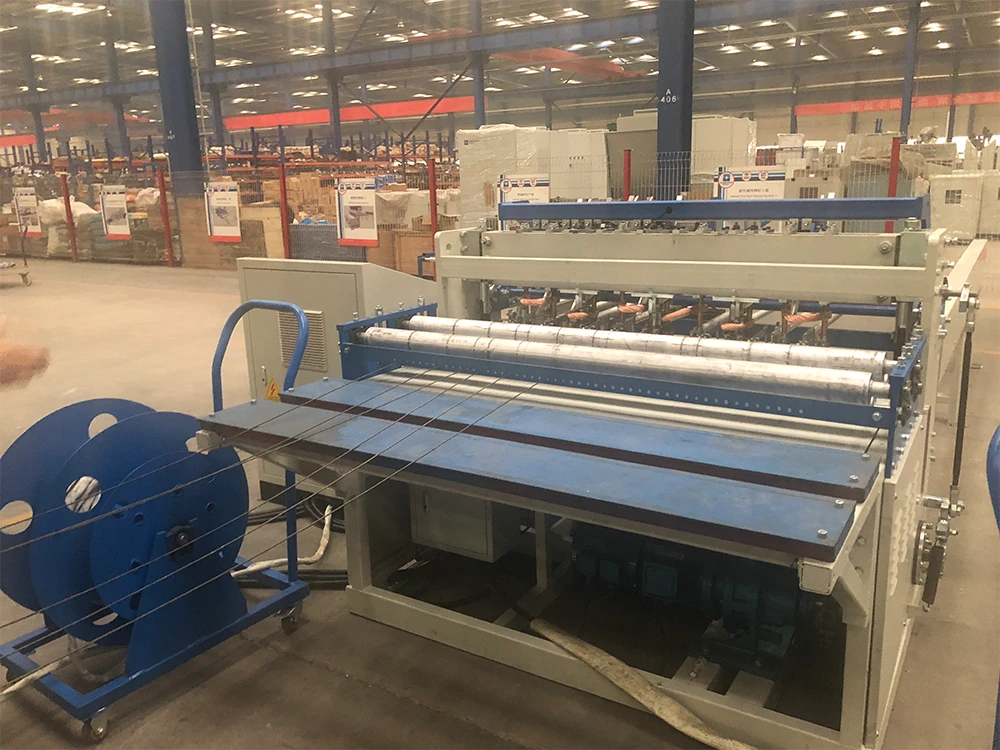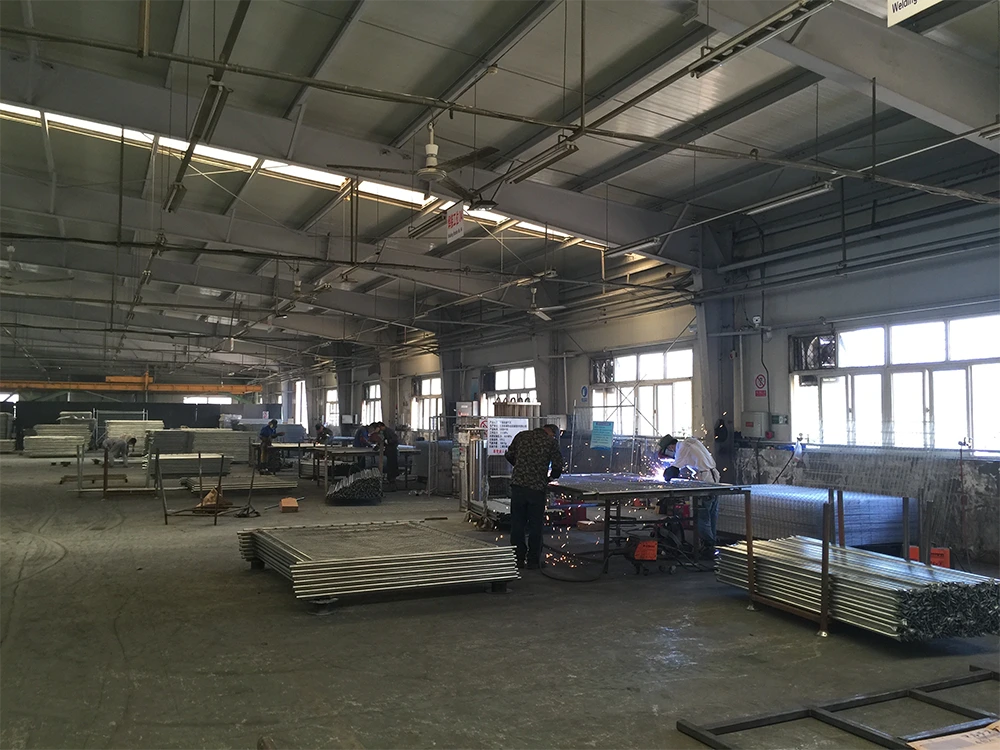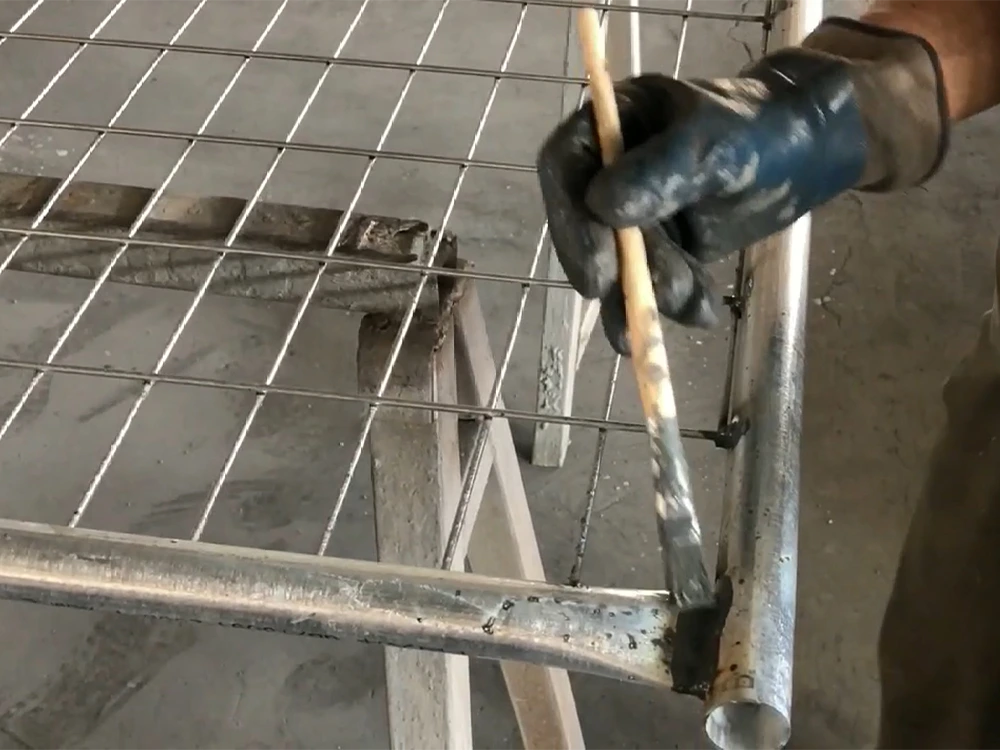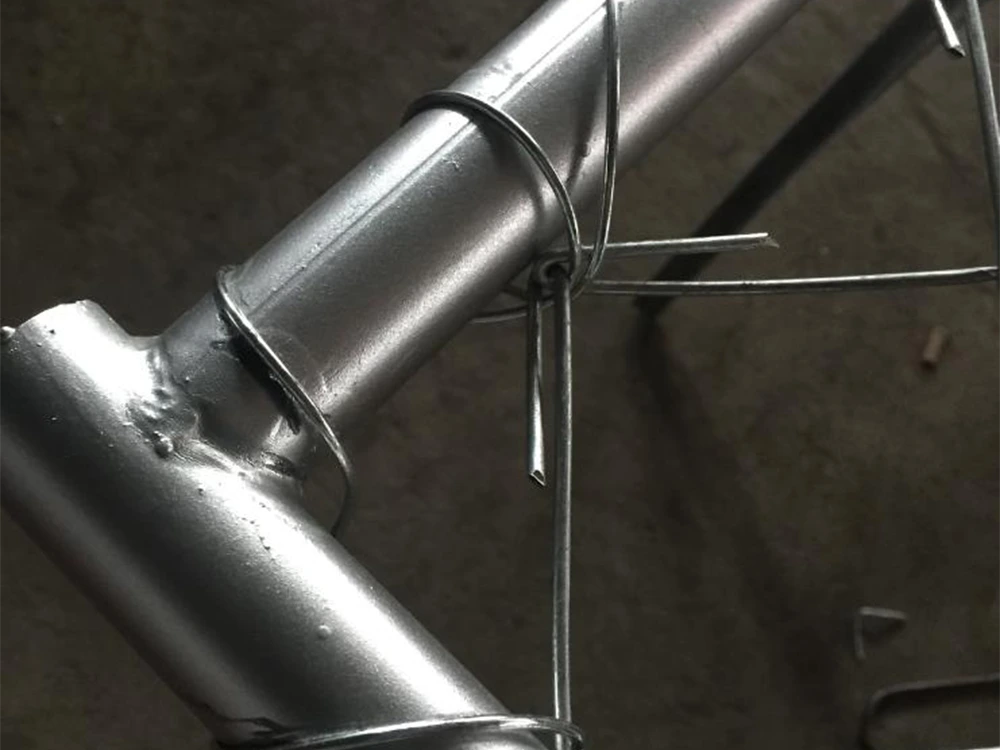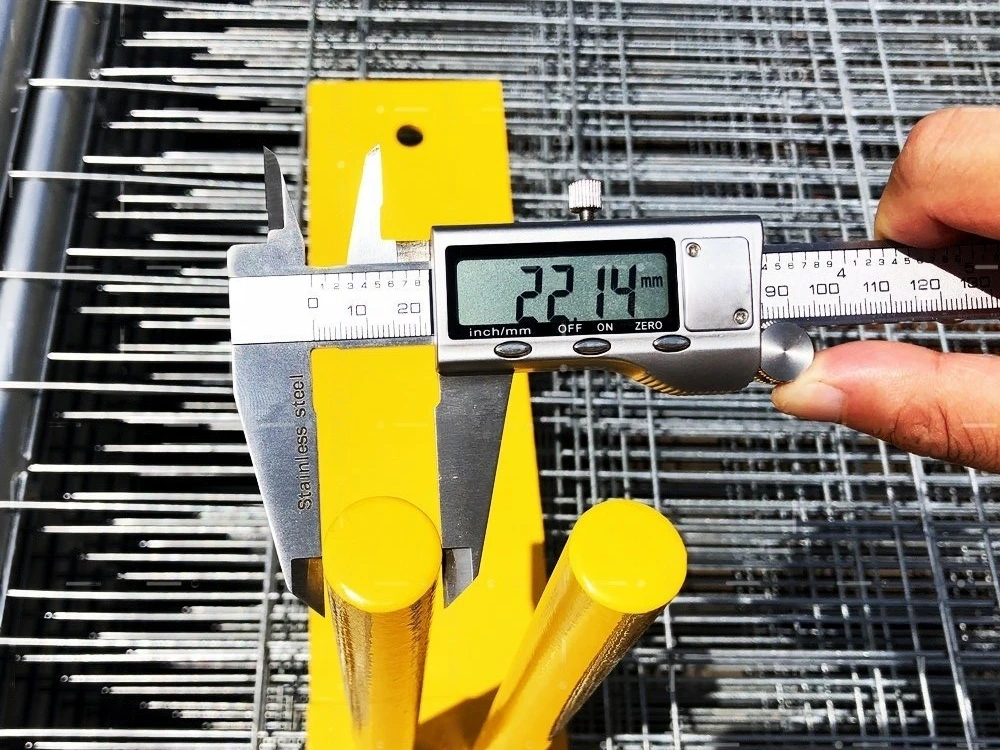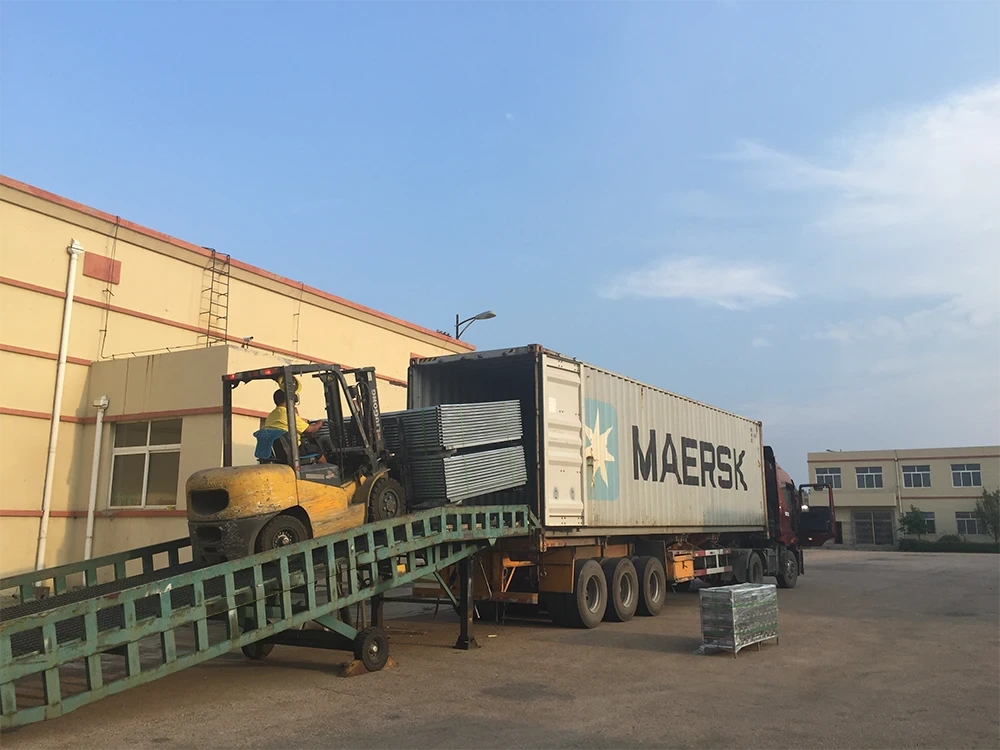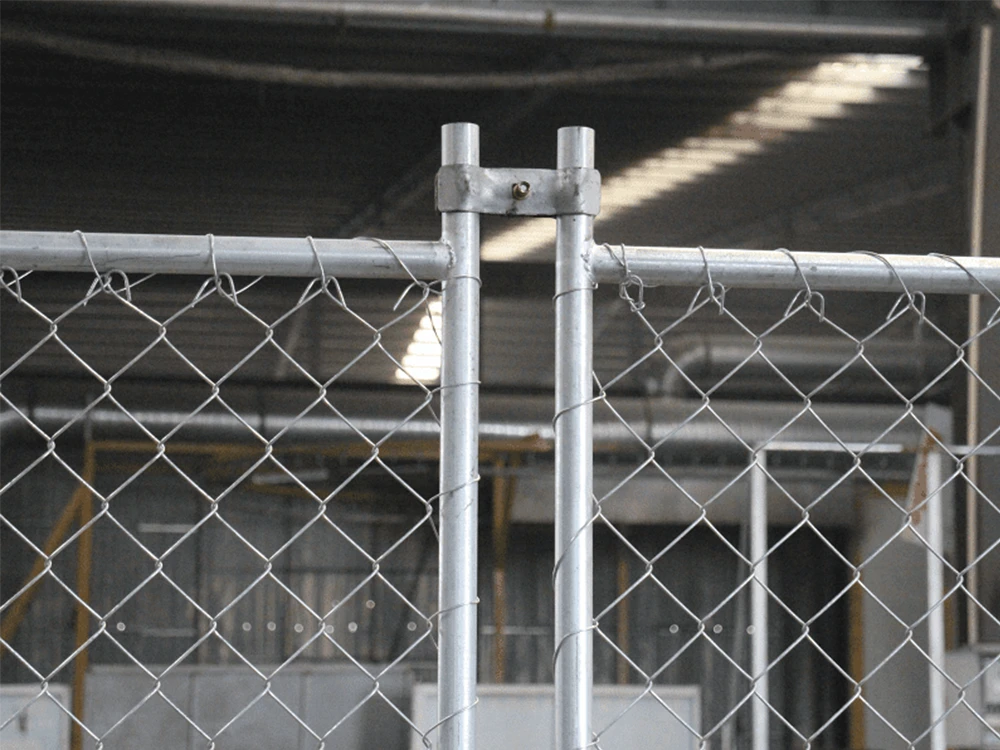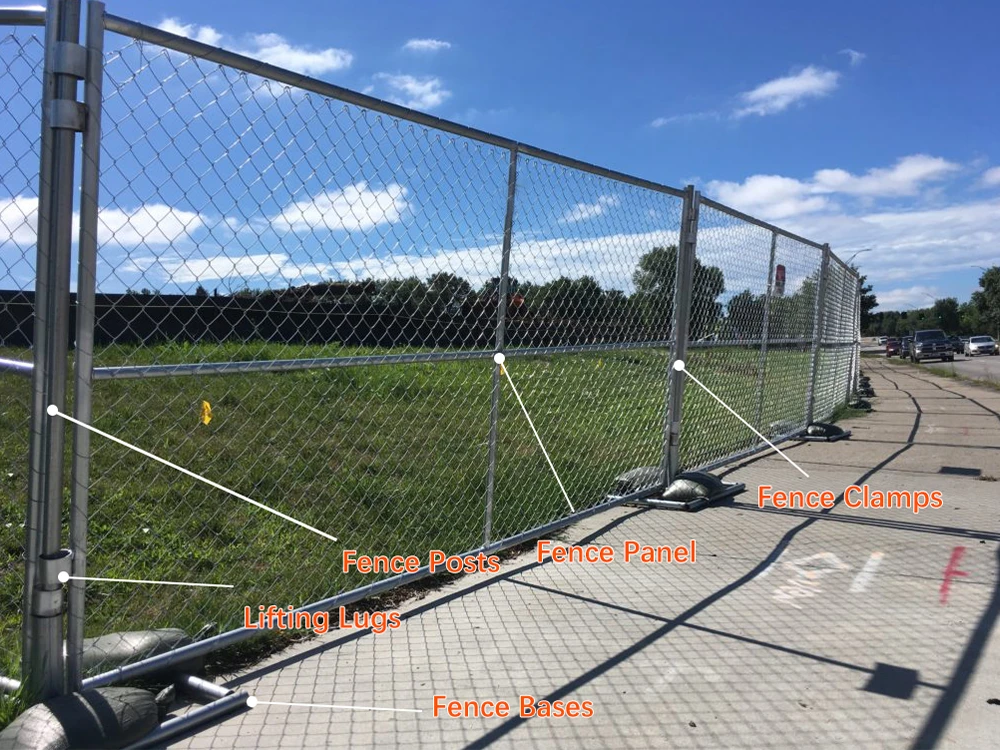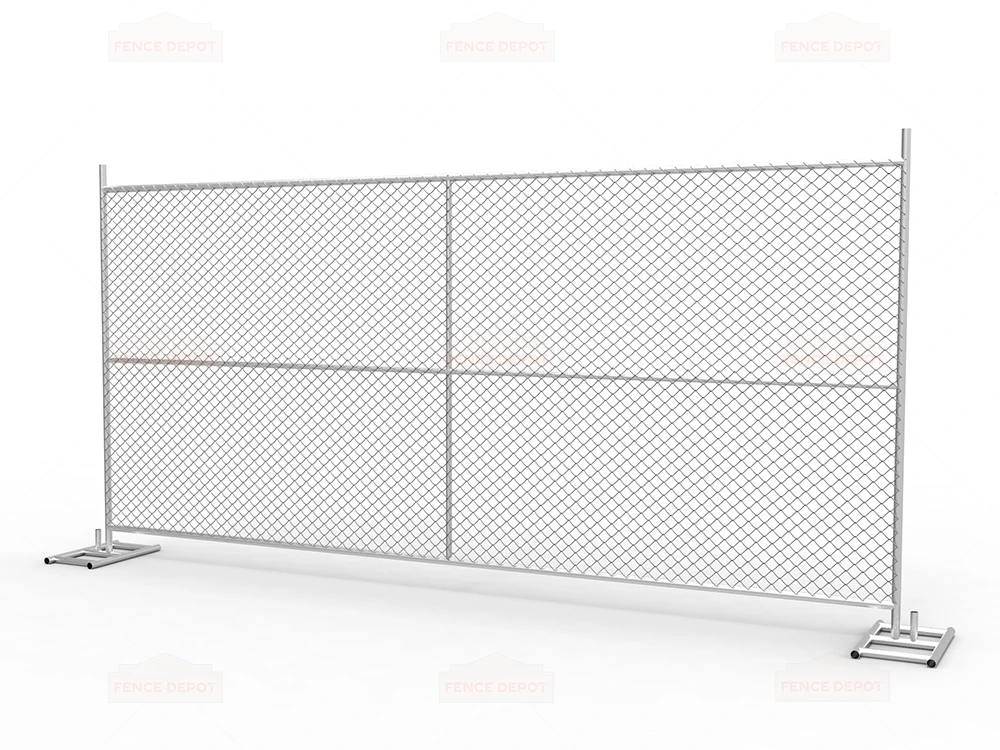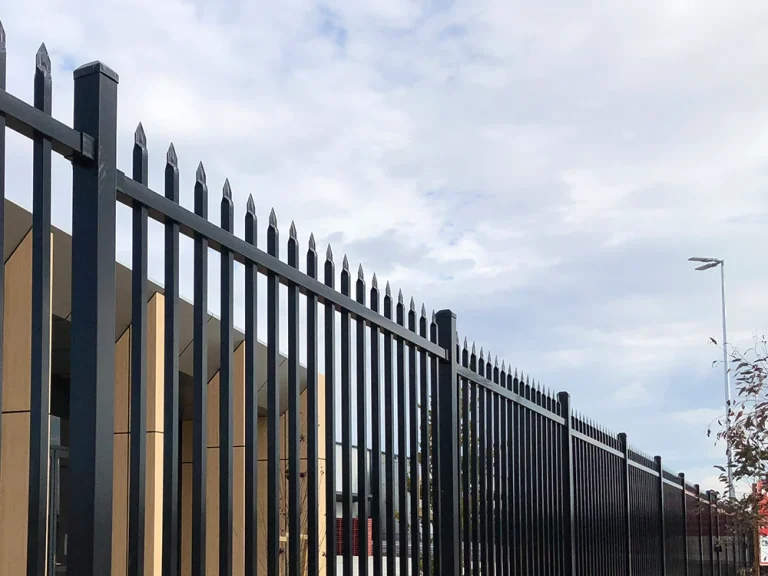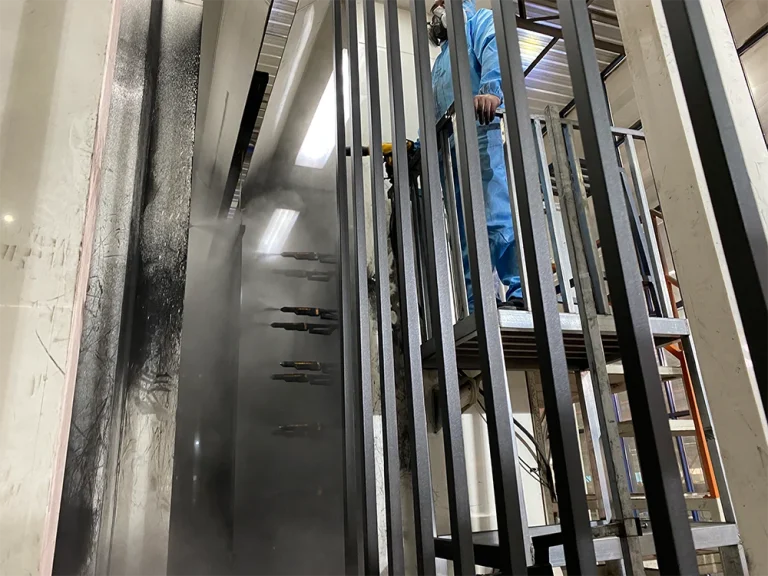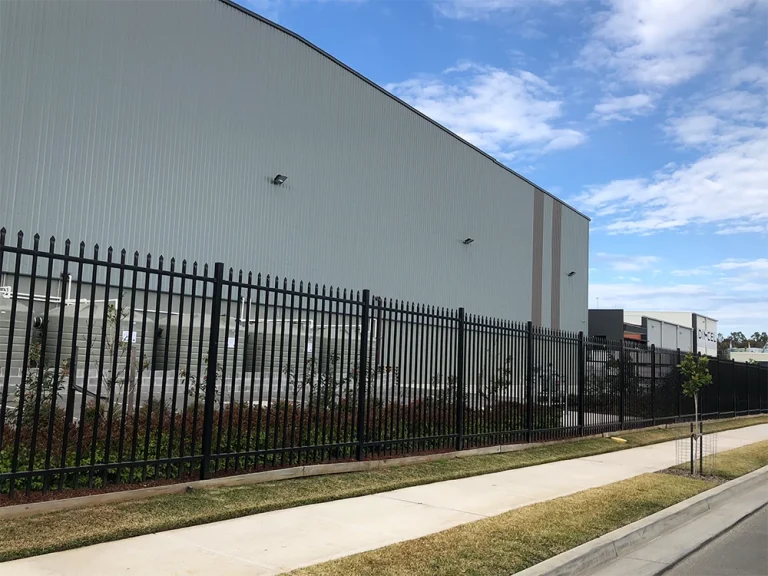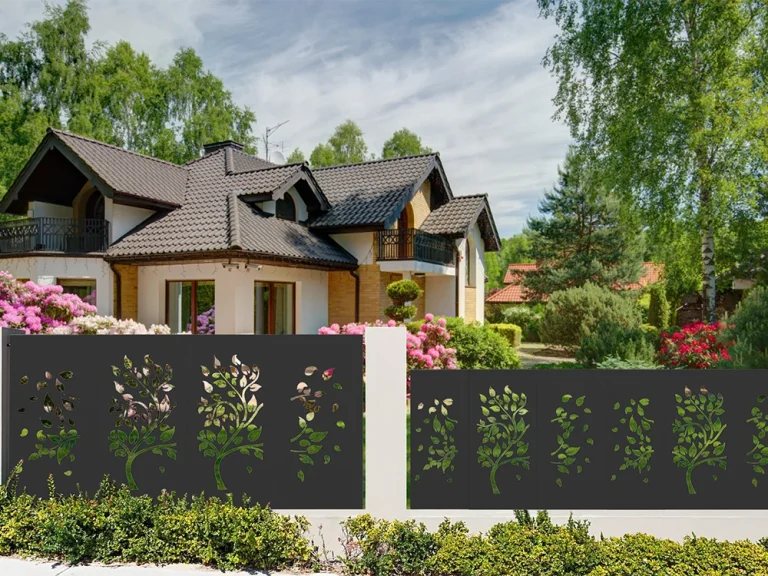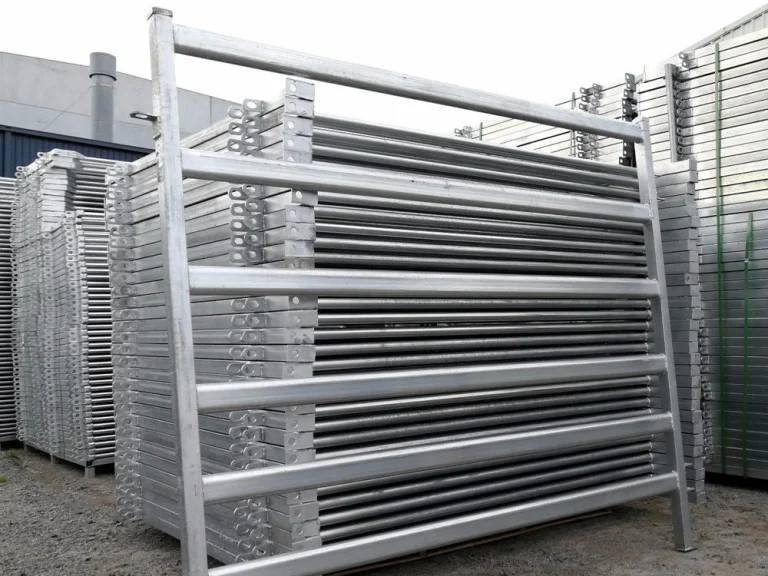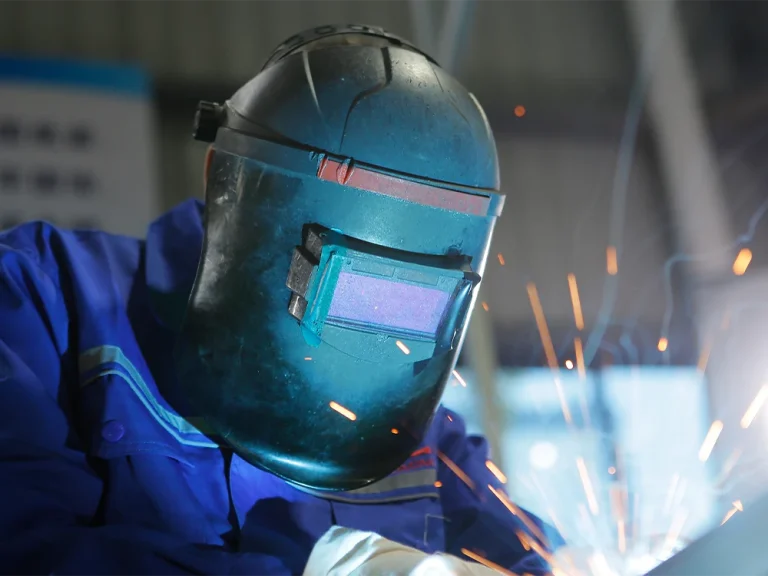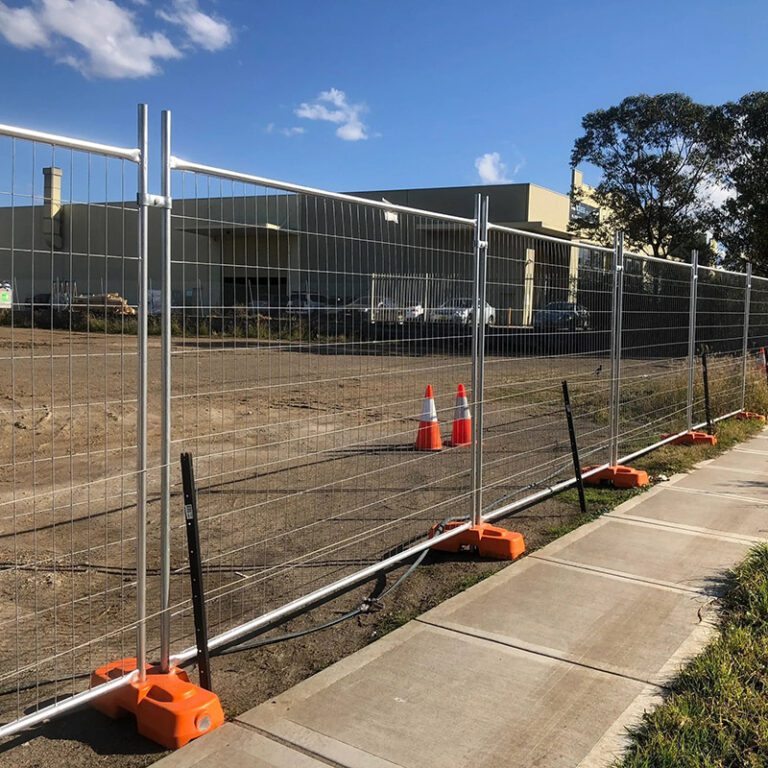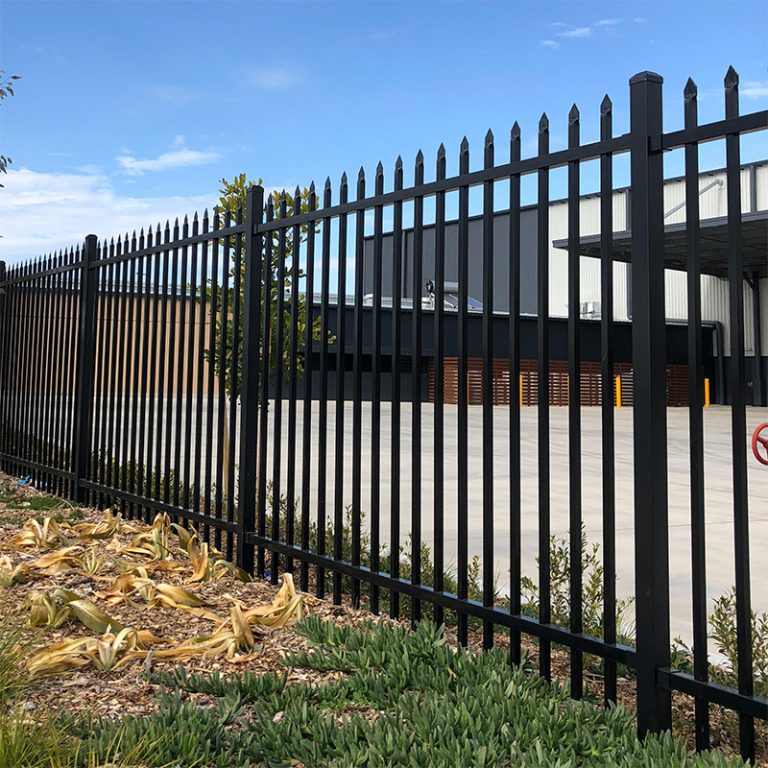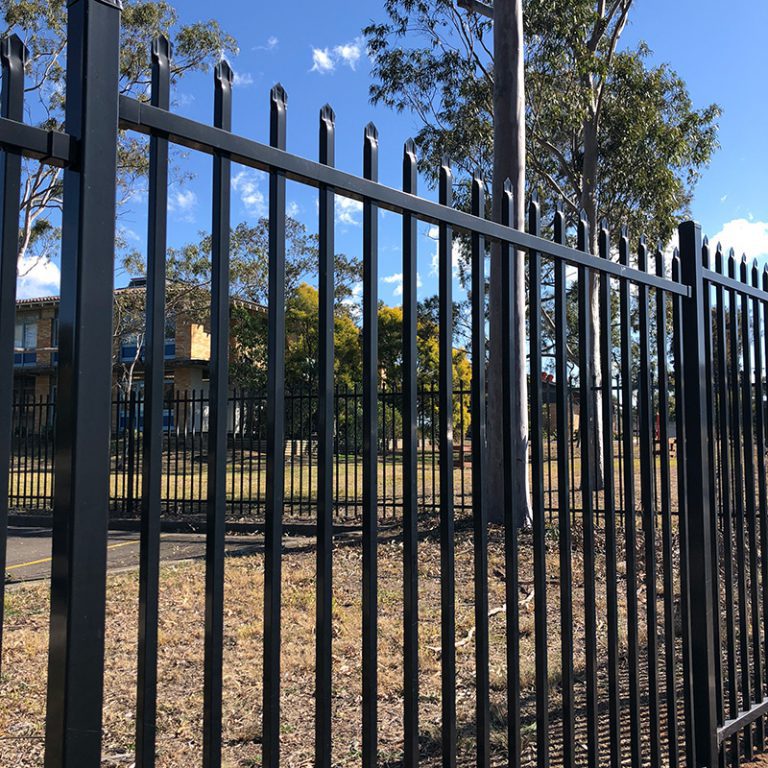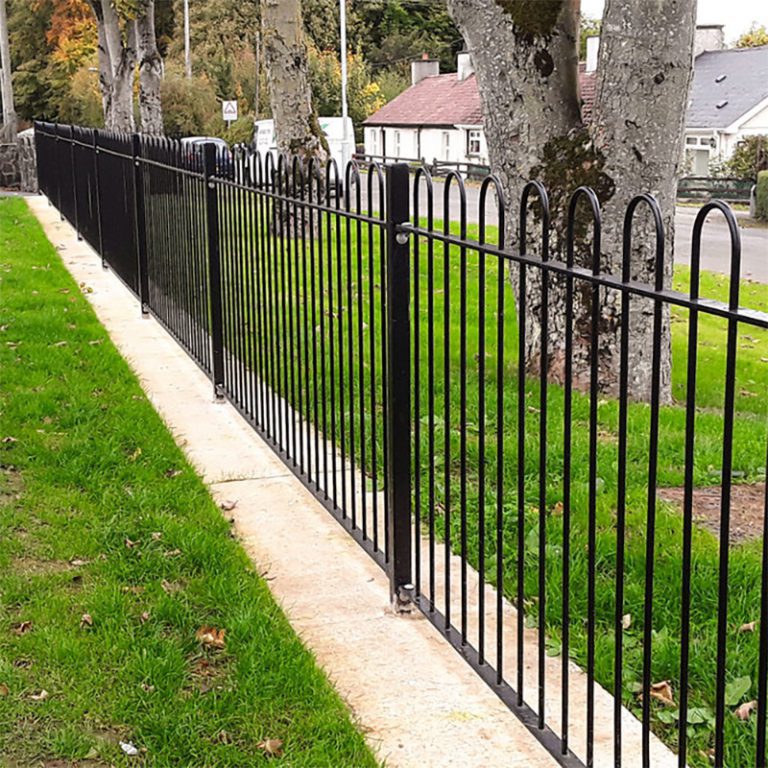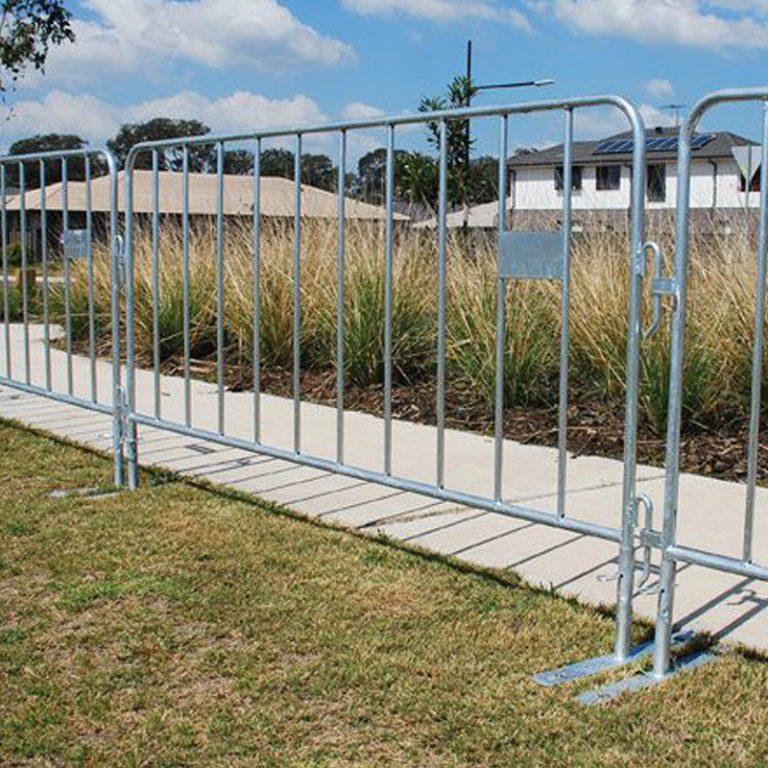In the realm of temporary fencing solutions, the temporary chain link fence production process and the integration of essential components play pivotal roles in delivering products that meet the highest standards of quality and functionality. This article details the complex manufacturing process of temporary chain link fence panels and the critical roles of the related components. Ensure that the final product not only meets the practical requirements of temporary fencing but also meets the requirements of safety, durability, and ease of use.
Temporary Chain Link Fence Detailed Production Process
1. Raw Material Inspection
The first step in our production process is the meticulous inspection of raw materials. We scrutinize the outer diameter, the wall thickness of galvanized pipes (specifications: Φ32 X 1.6), and the diameter of galvanized wires (specification: Φ3). This rigorous quality control ensures that all materials meet our detailed product specifications. By starting with high-quality materials, we set the foundation for the superior durability and performance of our fences.
2. Cutting and Flattening Galvanized Pipes
Precision is key in the second step, where galvanized pipes are cut to predetermined lengths using high-precision cutting tools. After cutting, the pipes are flattened at specific points to form the crossbeams. This process is crucial for ensuring that the frames are uniform and fit perfectly during assembly.
3. Weaving Galvanized Wire
The third step involves weaving galvanized wire using fully automated machinery. This automation ensures consistent mesh quality and uniformity, crucial for the structural integrity and aesthetic of the fence. This automated process ensures consistent quality and uniformity across all our fence panels.
4. Frame Welding
Our skilled technicians employ advanced welding techniques to assemble the panel frames. This temporary chain link fence production process not only ensures strong joints but also contributes to the smooth finish of the fence. Each welding point is inspect to guarantee that it meets our stringent standards for strength and durability.
5. De-slagging and Touch-up Painting
Following welding, the frames undergo a de-slagging process to remove any residual slag, a byproduct of the welding. After cleaning, touch-up painting is apply to cover any exposed metal, thus protecting it against corrosion and enhancing its visual appeal. This dual process is essential for extending the lifespan of the fence and maintaining its aesthetic quality.
6. Mesh Wrapping
In this step, the woven mesh is carefully wrap around the prepared frames. This process is performed with precision to ensure that the mesh is tight and evenly distributed across the frame, thus eliminating any sagging or gaps. The secure attachment of the mesh to the frame is critical for the fence’s functionality and durability.
7. Quality Inspection
Each completed fence panel undergoes a comprehensive quality inspection to ensure it meets our high standards. This includes checks for dimensions, structural integrity, and finish. Our quality control team uses detailed checklists to ensure no defects, thus ensuring that every panel delivered to our clients is of the highest quality.
8. Packaging
Finally, the fence panels are packing using robust materials designed to protect them during transportation. Panels are usually packing in a combination of strapping + steel frame + pallet. Our temporary chain link fence production packaging process is tailor to prevent any movement within the package, reducing the risk of damage. The temporary chain link fence panels are also labeled and barcoded for easy inventory management and tracking.
Essential Components and Their Integration
1. Lifting Lugs
Lifting Lugs is essential for the safe and efficient handling and positioning of fence panels. These are typically attached to the top of the fence panels, allowing them to be easily lifted and moved with lifting equipment such as cranes or forklifts. This is particularly useful in large installations or where panels need to move frequently, thus ensuring that the process is quick and reduces manual labor.
2. Fence Posts
Fence Posts are the vertical structures that provide support and stability to the fence panels. They are inserted into the ground or mounted on fence bases if the surface does not allow direct insertion. Made from durable materials like galvanized steel, these posts are designed to withstand environmental stressors such as wind and rain, ensuring the fence remains upright and secure.
3. Fence Bases
Fence Bases are crucial when installing fences on hard surfaces where digging is not feasible. These bases are typically weighted or can be anchored to the ground to provide stability. They hold the fence posts in a vertical position and prevent the fence from tipping over. This component is essential for temporary fences used at construction sites, events, or other scenarios where a non-permanent installation is required.
4. Fence Clamps
Fence Clamps are used to connect individual panels together, ensuring the entire fence line is secure and stable. These clamps are critical for maintaining the integrity of the fence, thus preventing gaps, and providing a continuous barrier. They are designed to be easy to install and adjust, thus allowing for quick assembly and disassembly of the fence sections.
Integration and Usage of Components
To assemble a complete temporary chain link fence system, these components are used together in the following manner:
1. Setting Up Fence Posts:
Begin by positioning the Fence Posts at the desired locations. If using Fence Bases, secure the posts onto the bases to ensure they are stable and upright.
2. Attaching Fence Panels:
Once the posts are in place, the Fence Panels are attached, while Lifting Lugs can be used here to help position the panels if they are heavy or cumbersome.
3. Securing Panels to Posts:
Use fence clamps to securely secure each panel to adjacent posts, thus ensuring that the clamps are tightening adequately to prevent any movement between the panels and the posts.
4. Interconnecting Panels:
Continue to connect the panels using Fence Clamps at each junction where a panel meets a post. This ensures that the entire fence is stable and the panels do not separate.
5. Final Adjustments:
Once all panels are connected and secured, make any necessary adjustments to ensure that the fence is straight and stable. Check all clamps and connections for tightness and correct placement.
Our Competitive Advantages
As a professional fence manufacturer, we offer numerous advantages with our temporary welded mesh fences:
1. Durability:
Our use of high-quality galvanized materials thus ensures that our fences withstand adverse weather conditions and wear over time.
2. Customizability:
We offer fences in various sizes and designs to meet specific customer needs.
3. Ease of Installation:
Our fences are quick and easy to install, thus saving you time and labor costs.
4. Safety and Security:
Each fence panel provides strong protection and privacy.
5. Aesthetic Appeal:
Our attention to detail ensures that each fence is not only functional but also enhances the visual appeal of the area it secures.
Comprehensive Conclusion
The combination of a detailed and quality-focused temporary chain link fence production process with well-designed components ensures that our temporary chain link fence panels are among the best in the market. From ensuring each material’s quality to the strategic use of supporting accessories, every aspect is aligned with our commitment to providing superior temporary fencing solutions. Whether for construction sites, events, or any other temporary application, our products offer unmatched durability, security, and ease of installation, making them the preferred choice for clients who seek reliability and efficiency. This comprehensive approach not only sets our products apart but also underscores our dedication to excellence in the temporary fencing industry.

